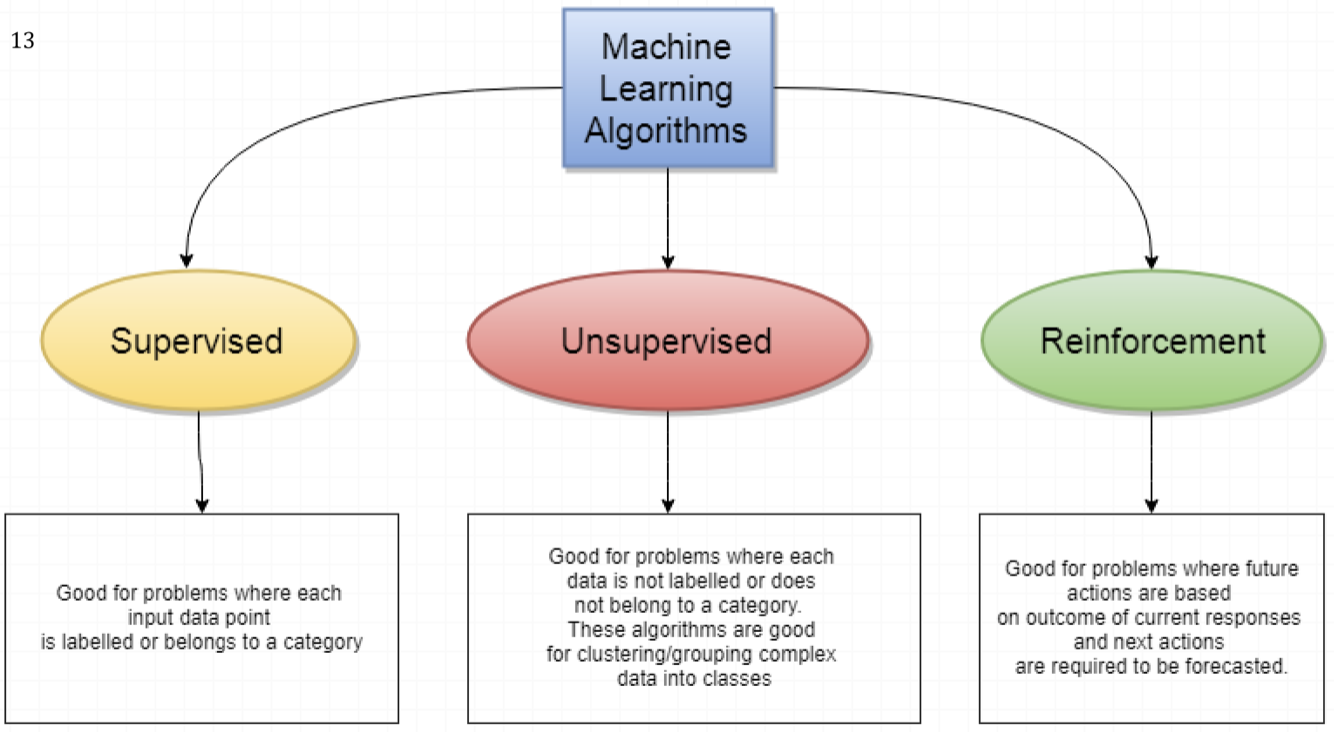-
Machine Learning is one type of AI
-
ML uses statistical learning algorithms to build systems that have the ability to automatically learn and improve without being explicitly programmed
-
Machine learning is made of several components:
- A model: the parametric function that you are trying to define
- A goal function that is directing the learning (the decision boundary)
- An optimisation algorithm that is updating the model to maximise the goal function
-
Machine learning is based on the idea that systems can learn from data, identify patterns and make decisions with minimal human intervention ML algorithms can be classified into one of three categories of learning:
Supervised learning
- We have input variables (x) and output variable (y) and we use an algorithm to learn the mapping from input to output
- In other words, a supervised learning algorithm takes a known set of input dataset and its known responses to the data (output) to learn the regression / classification model
- A learning algorithm then trains a model to generate a prediction for the response to new data or the test datasets
- Supervised learning requires labelled data
- Labelled data is that which is known (e.g. pictures of bridges, etc.)
- As the source data (pictures, text, audio, etc.) is input, it is given metadata which describes what is being input (in context of the ML system)
- A typical example might be to feed in tens of thousand of different numerals for detection of OCR
Unsupervised learning
- Unsupervised learning is the opposite of supervised
- Data is input without understanding and the job of the system is to make sense and infer patterns through similarities, differences, etc.
- This is typically used as part of exploratory data analysis, Big Data, etc.
Reinforcement learning
- Just as we train children and pets through reward and punishment, we can use the same technique in ML
- The system agent learns through trying different things with rewards for success and punishment for failure
- An example is chess. We program the rules, but the system learns the best moves based on its successes and losses
Semi-Supervised Learning
- This is a category in-between supervised and unsupervised.
- It takes the benefits of supervised learning (e.g. labelled training data) with unlabelled data
- It is quicker because the labelling process is sometimes too labour intensive, but also accurate because there is some labelled data on which to feed the algorithm

Key Definitions
-
Artificial Intelligence (AI) is the general term given to any kind of machine ‘intelligence’
- AI systems can be classed as:
- Narrow intelligence: superior in a specific task (e.g. self driving car)
- General intelligence: Comparable to humans in many tasks
- Super intelligence: Surpasses even the best human in many types of task
- AI systems can be classed as:
-
Machine Learning (ML) is a subset of AI that uses statistical learning algorithms to build systems that have the ability to automatically learn and improve from experiences, without being explicitly programmed.
-
ML systems are categorised by how they learn:
- Supervised learning uses known outcomes (training set) with labelled data to infer unknown input patterns
- Unsupervised learning: Infers patterns in unlabelled data
- Reinforcement learning: Uses reward and punishment to develop and better itself